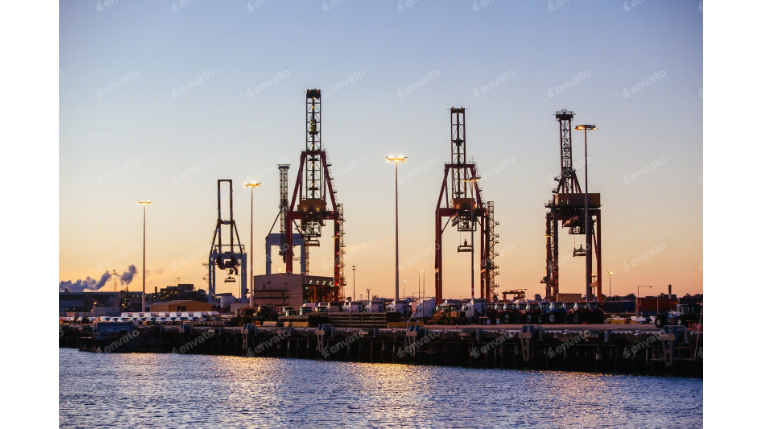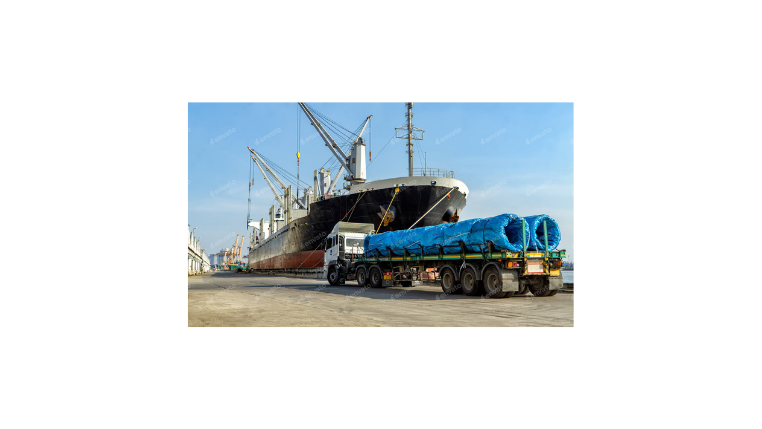What is a TEU? The Standard Unit That Moves the World
The global economy is a colossal, interconnected machine, and its lifeblood is the constant movement of goods. This complex dance is made possible by a simple yet revolutionary concept: a standardized steel box. And the universal language used to measure, manage, and move these boxes is the TEU (Twenty-foot Equivalent Unit).
For anyone involved in international trade, from a small business owner importing their first pallet to a logistics professional managing a global network, understanding the TEU is fundamental. It is the metric that underpins everything from vessel capacity and port operations to freight pricing and global trade statistics.
From Chaos to Standardization: The History of the TEU
To appreciate the importance of the TEU, it’s essential to look back at the world before it existed. Prior to the 1950s, loading a ship was a slow, labor-intensive, and chaotic process. Goods of all shapes and sizes (known as breakbulk cargo) were loaded piece by piece by teams of longshoremen. This process was inefficient, expensive, and left cargo highly susceptible to damage and theft.
In 1956, a trucking magnate named Malcom McLean had a revolutionary idea: instead of loading the cargo, why not load the entire truck trailer onto the ship? This idea evolved into creating a standardized, lockable, and easily transferable box—the modern shipping container. The baseline size for this innovation was a 20-foot-long container, which became the foundation for the Twenty-foot Equivalent Unit (TEU). This act of standardization ignited the era of containerization and transformed global trade forever.
Defining the TEU: More Than Just a Box
A TEU is an exact measure of containerized cargo capacity, equal to the volume of a single standard 20-foot shipping container. It is the common denominator that allows the logistics industry to talk about and compare capacity in a consistent way.
How Capacity is Calculated:
The calculation is simple and is based on the 20-foot container as one unit.
- 1 x 20-foot container = 1 TEU
- 1 x 40-foot container = 2 TEU
When a container ship is described as having a capacity of 18,000 TEU, it means it can carry a combination of containers that add up to this total. For example, it could carry 9,000 forty-foot containers, or 18,000 twenty-foot containers, or more realistically, a mixed manifest such as 6,000 forty-foot containers (12,000 TEU) and 6,000 twenty-foot containers (6,000 TEU).
The Container Family: Common Types and Their TEU Values
While the 20ft dry container is the base unit, the TEU is used to measure the capacity of all standard container types:
- Standard Dry Containers: The 20-foot (1 TEU) and 40-foot (2 TEU) are the workhorses of the industry.
- High Cube (HC) Containers: A 40-foot High Cube (2 TEU) is one foot taller than a standard container, offering more cubic volume for light, bulky cargo.
- Refrigerated Containers (Reefers): These 20-foot (1 TEU) and 40-foot (2 TEU) containers are used for perishable goods and have slightly less internal capacity due to insulation and cooling machinery.
- Specialized Containers: Open Top and Flat Rack containers, used for oversized or heavy cargo, also have TEU values that determine how much space they occupy on a vessel.
The Profound Impact of the TEU on Global Logistics
The standardization provided by the TEU had a ripple effect that reshaped the world.
- Massive Gains in Port Efficiency: The TEU standardized the design of everything. Ship-to-shore cranes, container yard stacking equipment, trucks, and trains are all built to TEU dimensions. This allowed for massive automation and economies of scale, reducing a ship’s time in port from weeks to mere hours.
- Economic Globalization: By dramatically lowering the cost of transportation, the TEU made it economically viable to manufacture goods in one country and sell them in another. This fueled the rise of global supply chains and gave consumers access to a wider variety of affordable products.
- Environmental Considerations: The drive for efficiency has led to the creation of Ultra Large Container Vessels (ULCVs) that can carry over 24,000 TEU. While these mega-ships are more fuel-efficient per container, the sheer scale of global TEU movement places immense pressure on the industry to decarbonize and adopt greener technologies.
The Future of the TEU and Containerized Trade (Outlook 2025)
The TEU itself isn't changing, but the technology within it is. The future is focused on the "Smart TEU"—a standard container equipped with IoT sensors that provide real-time data on its location, temperature, humidity, and security status. Furthermore, the industry is pushing to digitalize the documentation associated with every TEU, replacing paper Bills of Lading with secure electronic records to improve speed and reduce fraud.
Conclusion
The TEU is far more than a simple acronym; it is the universal standard that makes the complex, high-volume dance of global logistics possible. From the way ships are built to the way freight is priced, the TEU is the fundamental unit of modern commerce. For any business involved in shipping, understanding this concept is the first step toward effective planning and supply chain optimization.
A modern logistics platform like Modaltrans is designed to operate in this TEU-centric world. It gives businesses the power to manage their containerized shipments with ease, allowing them to compare rates per TEU, book vessel capacity, and track their individual containers from a single, intuitive interface, bringing clarity and control to the global movement of goods.










